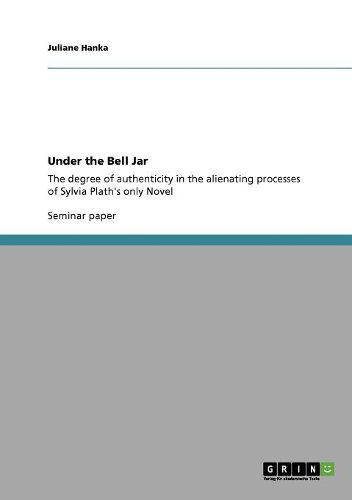Readings Newsletter
Become a Readings Member to make your shopping experience even easier.
Sign in or sign up for free!
You’re not far away from qualifying for FREE standard shipping within Australia
You’ve qualified for FREE standard shipping within Australia
The cart is loading…






Seminar paper from the year 2008 in the subject American Studies - Literature, grade: 1,0, Dresden Technical University (Institut fur Anglistik/Amerikanistik), course: The 1950s and 1960s in American Literature, 18 entries in the bibliography, language: English, abstract: 1 Introduction Sylvia Plath ended her Life by gassing herself in a stove on February 11th in 1963. This is not the most important fact about the poet and yet the best known detail of her life. Since her death, Plath’s work and her life have been irrevocably interblended. Thus, she is either interpreted as a courageous but suppressed female writer or as a dark and mentally disordered summoner of death. In either case she had been mystified as a kind of tragic hero and some critics continue with this kind of blind Plathophilia (Bachner 2008) until today. Although her artistic work is mainly composed of poems, her only novel will be the object for the following interpretation of the protagonist’s alienation in comparison to respective events in the author’s life. Being so closely connected it is impossible to reflect on the novel without factoring her life into the described events of alienation in The Bell Jar. Thus, after introducing the influencing social circumstances of her time, the paper concentrates on Sylvia Plath’s degree of authenticity in her writing. On the basis of these findings, two different stages of the protagonist’s alienation are to be developed and afterwards her ambivalent relation towards the opposite sex is being discussed as a major consequence to her schizoid attitudes towards her desired social status. Finally, the analysis deals with Plath’s strong symbolism, in which the mirror serves as frequent metaphoric means to illustrate estrangement not only from the outside world, but also from her inner self. Another one, the fig-tree, stands for the inability to decide for a certain way of life. Both are crucial problems of the protagonist Esther Greenwood and it is to examin
$9.00 standard shipping within Australia
FREE standard shipping within Australia for orders over $100.00
Express & International shipping calculated at checkout
Seminar paper from the year 2008 in the subject American Studies - Literature, grade: 1,0, Dresden Technical University (Institut fur Anglistik/Amerikanistik), course: The 1950s and 1960s in American Literature, 18 entries in the bibliography, language: English, abstract: 1 Introduction Sylvia Plath ended her Life by gassing herself in a stove on February 11th in 1963. This is not the most important fact about the poet and yet the best known detail of her life. Since her death, Plath’s work and her life have been irrevocably interblended. Thus, she is either interpreted as a courageous but suppressed female writer or as a dark and mentally disordered summoner of death. In either case she had been mystified as a kind of tragic hero and some critics continue with this kind of blind Plathophilia (Bachner 2008) until today. Although her artistic work is mainly composed of poems, her only novel will be the object for the following interpretation of the protagonist’s alienation in comparison to respective events in the author’s life. Being so closely connected it is impossible to reflect on the novel without factoring her life into the described events of alienation in The Bell Jar. Thus, after introducing the influencing social circumstances of her time, the paper concentrates on Sylvia Plath’s degree of authenticity in her writing. On the basis of these findings, two different stages of the protagonist’s alienation are to be developed and afterwards her ambivalent relation towards the opposite sex is being discussed as a major consequence to her schizoid attitudes towards her desired social status. Finally, the analysis deals with Plath’s strong symbolism, in which the mirror serves as frequent metaphoric means to illustrate estrangement not only from the outside world, but also from her inner self. Another one, the fig-tree, stands for the inability to decide for a certain way of life. Both are crucial problems of the protagonist Esther Greenwood and it is to examin